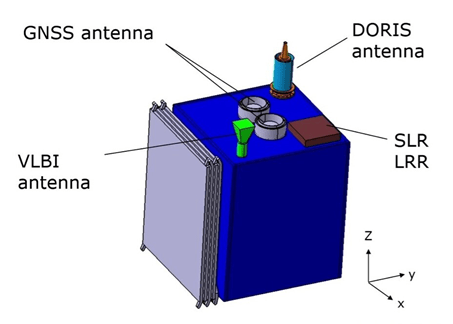
ESA’S GENESIS MISSION: ENHANCING PRECISE POSITIONING
The International Terrestrial Reference Frame (ITRF) is a realization of the International Terrestrial Reference System (ITRS), the global spatial reference system that rotates with the Earth in its daily motion in space, and provides the reference used for all measurements made on or near the Earth’s surface.
The ITRF provides a network of reference points, the Global Terrestrial Observing System stations, which are spread all over the world. The position of these stations is set using the data of a quartet of space-based geodetic techniques:
- Global Navigation Satellite System;
- VLBI: Very Long Baseline Interferometry;
- SLR: Satellite Laser Ranging;
- DORIS: France’s Doppler Orbitography and Radiopositioning Integrated by Satellite System.
Yet, when combining all these techniques for the ITRF generation, the process is today affected by the accuracy on which we may determine the differential coordinates between the reference point of each technique and several unmodelled systematic errors. To overcome those, ESA’s Directorate of Navigation is planning a new mission, called GENESIS, whose results will enable the generation of an updated global model of Earth, aiming at supporting the production of a more accurate ITRF.

For this a dedicated GENESIS satellite, at around 6000 Km height, will integrate all the geodetic space instruments (see Figure 1), in a fully synchronised and accurately calibrated satellite, complementing efficiently Earth geodetic infrastructure. GENESIS aims at supporting the production of an ITRF accuracy of up to an accuracy of 1 mm.
Following the publication of a GENESIS scientific white paper, the ESA’s recent GNSS Scientific Colloquium in Sofia, Bulgaria, and the 16th meeting of the United Nations International Committee on GNSS in Abu Dhabi, the interest of GENESIS is fully confirmed with a wide range of benefits for precise navigation, Geodesy and Earth science applications.
The FutureNAV programme, including GENESIS, will be submitted for decision to the next ESA Council at Ministerial Level in November 2022.


